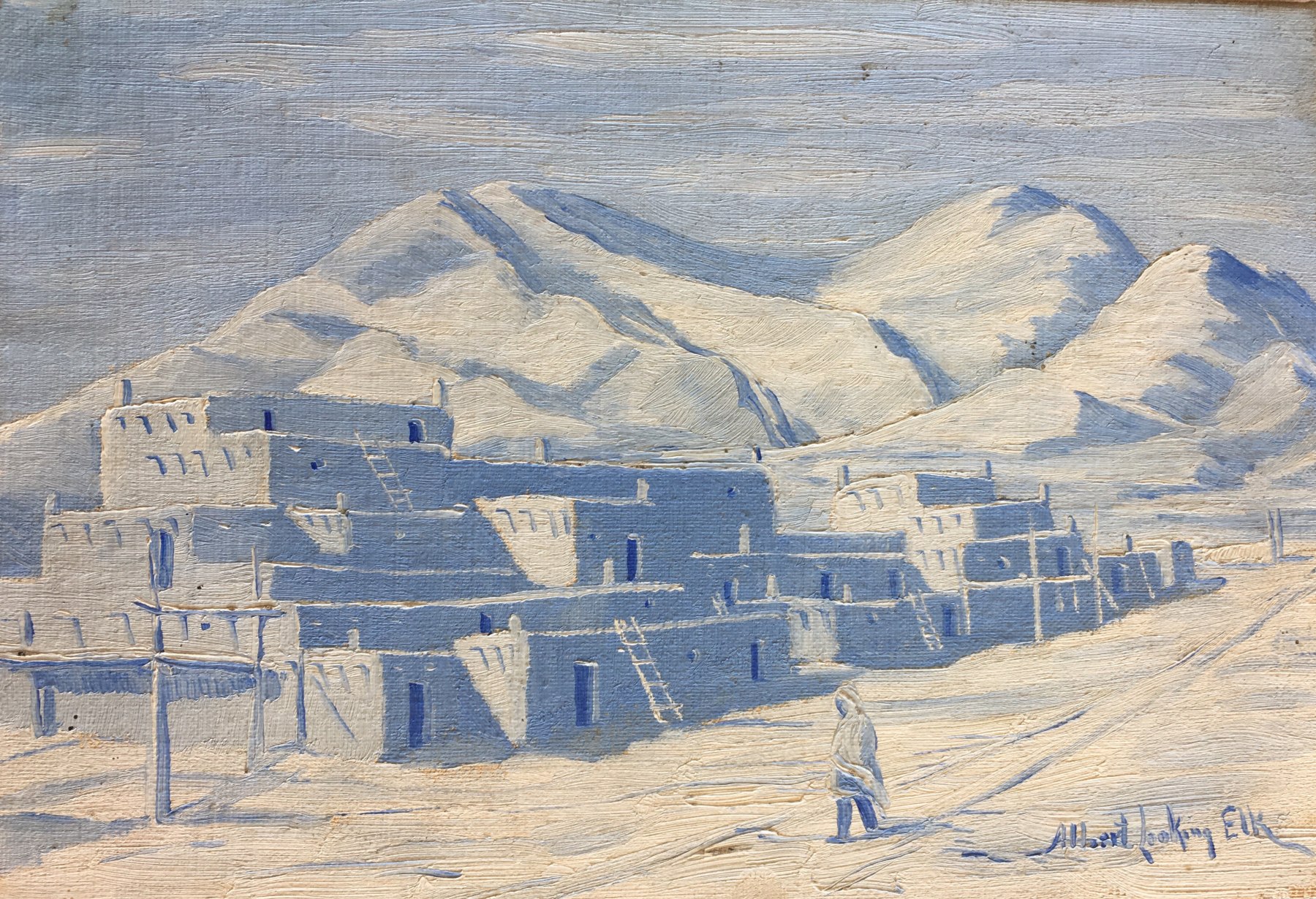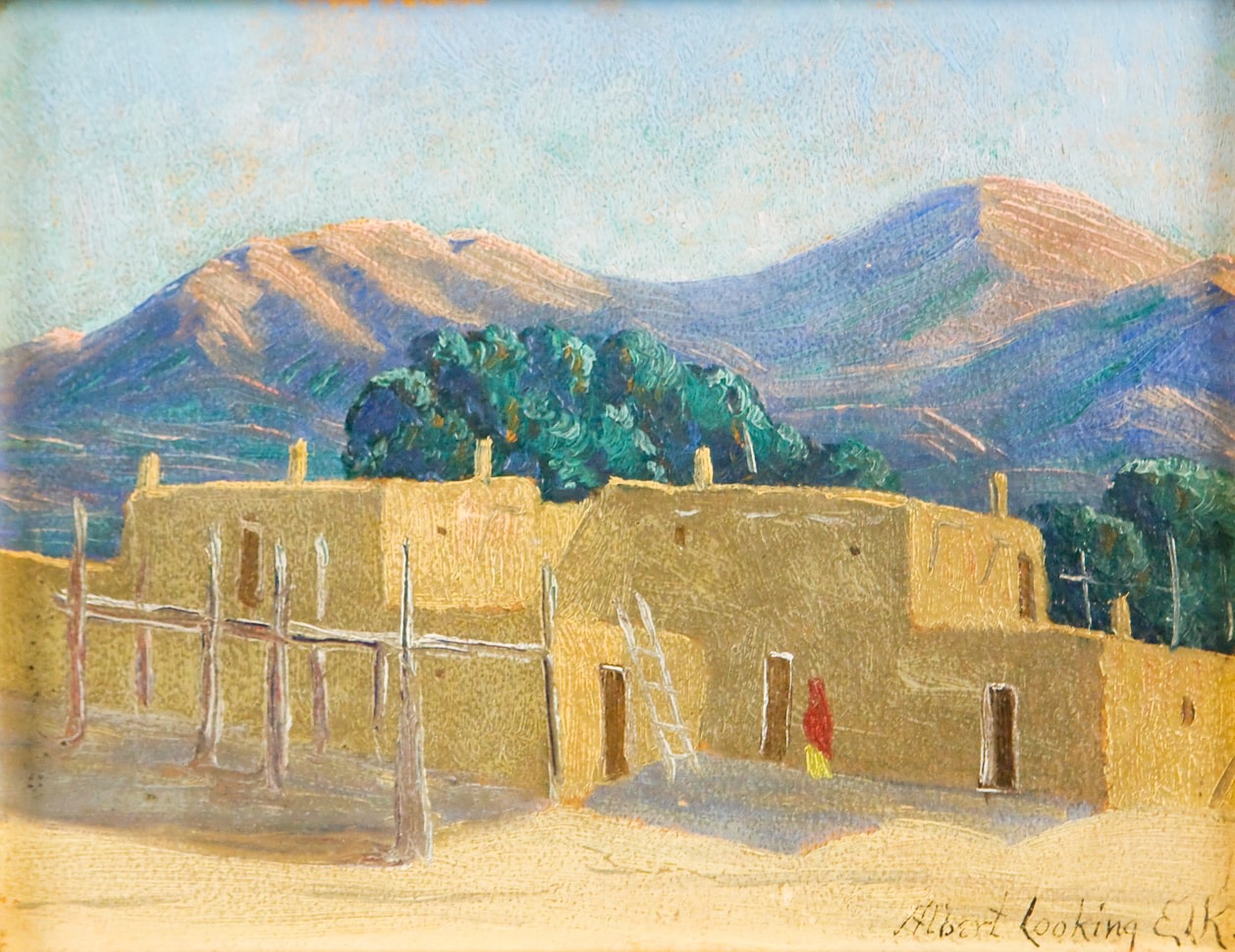American, 1888-1940
Albert Martinez, better known as Albert Looking Elk, entered the art world as a model when he was around twelve years old, and then as an adult, sold his own paintings to tourists. At first reluctantly posing for Irving Couse, a founding member of the Taos Society of Artists (TSA), Martinez went on to make a career modeling for artists. Later, his wife and children would also work as artist models. Looking Elk took his first and only art lessons from Oscar Berninghaus, another TSA founder. By 1917, if not earlier, Berninghaus set up Looking Elk with his first basic painting equipment including oils, easel, brushes, and canvas. He also received attention from the Taos Valley News in the July 16, 1918 edition: "Taos has a native artist...Albert Martinez of the Pueblo...He has painted a number of pictures of merit, several of which he has been able to sell at a fair price."
The "fair price" was seldom more than a few dollars, but his success at selling was such that he was said to be the first tribal member at Taos Pueblo to purchase an automobile -- a Studebaker. Looking Elk received more recognition than the other artists of that time, occasionally showing his paintings between 1923 and 1930 at the Museum of Fine Arts in Santa Fe, winning a special art award during his first group. Perhaps he earned this recognition because he sometimes painted in the style of the Santa Fe Indian School.
His primary work however, like that of Albert Lujan and Juan Mirabal, depicted scenes of the Pueblo itself. Although he sold paintings from his house in the Village, like Lujan he also painted on the Village plaza where tourists could find him. He often painted near his house on the south side but many of his compositions feature the north building. Also, like Lujan, he painted prosaic, non-romanticized scenes of the Pueblo, in contrast to the often sentimentalized images created by the TSA artists. Looking Elk painted, however, with more atmospheric light and color than Lujan, giving his work much appeal to tourists and apparently commanding a higher price.
Sources:
(Traditional Fine Arts On Line) on March 12, 2003 with permission of the Harwood Museum of Art. The essay was earlier published in a 16-page illustrated catalogue titled Three Taos Pueblo Painters in connection with an exhibition of the same name held at the Harwood Museum January 24 through April 20, 2003.
Paul and Kathleen Nickens, Pueblo Indians of New Mexico



